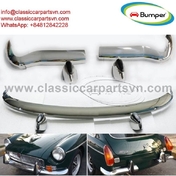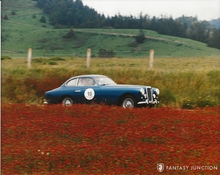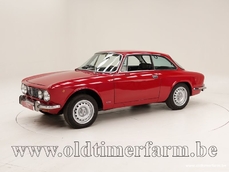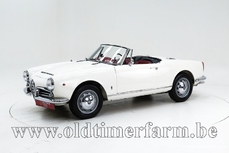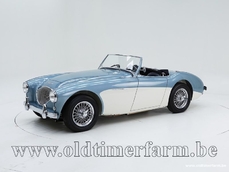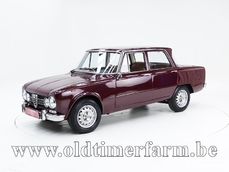MG Other Magna Roadster '34 1934
General description :
Lowered price from span class="pq6dq46d tbxw36s4 knj5qynh kvgmc6g5 ditlmg2l oygrvhab nvdbi5me sf5mxxl7 gl3lb2sf hhz5lgdu">img src="https://static.xx.fbcdn.net/images/emoji.php/v9/t33/1/16/2705.png" alt="?" width="16" height="16" /> €125.000- €112.500 span class="pq6dq46d tbxw36s4 knj5qynh kvgmc6g5 ditlmg2l oygrvhab nvdbi5me sf5mxxl7 gl3lb2sf hhz5lgdu">img src="https://static.xx.fbcdn.net/images/emoji.php/v9/t33/1/16/2705.png" alt="?" width="16" height="16" /> Impressive 6 Cylinder L type in concours condition Full history file going back to 1934 Born as a very rare Magna Coupé it was restored to an open two seater with a Q type rear Member of the MMM club community and well-known car Over the years constantly improved and used Rare opportunity to access the prewar MG race car scene! The M.G. car company introduced its new six-cylinder Magna models in 1931, filling a gap in the firm’s catalogue between the four-cylinder Midgets and the large 2.5-liter 18/80 models. First and most popular of the Magnas were the F-Type cars, with a 1,272 cc overhead-cam six-cylinder engine, derived from that of the Wolseley Hornet, with dual carburetors. This was followed in 1933 by the K-Type Magnette, with a shortened-stroke engine improved with a stronger crankshaft and cross-flow cylinder head, available on two lengths of wheelbase. This model was quite successful in racing, particularly the supercharged K3 cars. In March 1933, an improved Magna, designated L-Type, was introduced. Using the K-Type’s 1,087-cc six, the L-Type had a Wolseley-derived four-speed gearbox but a narrower track than the K-Types. Four body styles were available. Four-seat tourers, saloons, and a slope-back continental coupe were designated L1. A single two-seat model, a sports roadster, was called L2. All had the slanted radiator of the earlier Magnas and sweeping fenders. A total of 576 L1/L2 Magnas had been produced by the time production ceased in 1934. Specifications Bodywork Length : cm (in): 330 (130) Width : cm (in): 131 (51.5) Height : cm (in): 127 (50) Wheelbase : cm (in) : 239 (94) Weight: kg (lb) : 813 (1792) Mechanics. Displacement : straight 6 1086 cc, front-mounted Valve gear : 12 Fuel system : 2 SU carburetors Gearbox : 4-speed manual Drive wheels : rear-wheel drive RHD Maximum power : 41 hp at 5500 rpm Maximum speed : 125 km/h (78 mph)
http://www.oldtimerfarm.be/en/collection-cars-for-sale/6511/mg-l-type-magna-roadster-34.php
1934 MG Other Magna Roadster '34 is listed sold on ClassicDigest in Aalter by Oldtimerfarm Dealer for €112500.
Car Facts
Car type : Car Make : MG Model : Other Model Version : Magna Roadster '34 Engine size : 0.0 Model Year : 1934 Location : Aalter
Sold
Seller Information
Sold
People who viewed this MG Other also viewed similar MG listed at ClassicDigest
Other cars listed for sale by this dealer
About MG
The MG (Morris Garages) story is a rich tapestry that spans several decades and involves various owners and corporate entities. Here is an overview of the MG story from its inception to the challenging period under the British Leyland (BL) corporation, highlighting key models and their specifications:1. Foundation and Early Years:
Year of Establishment: 1924
Founder: Cecil Kimber
Initial Focus: Coachbuilding and customization of Morris cars.
2. MG Octagon Logo:
The iconic MG octagon logo was introduced, representing the merger of MG with Morris.
3. MG M-Type Midget (1929–1932):
Key Features:
Compact two-seater.
Powered by a 0.8L engine.
The beginning of the Midget series.
4. MG T-Series (1936–1955):
Key Models:
MG TA, TB, TC, TD, TF
Key Features:
Roadsters with classic styling.
Success in motorsports, particularly in pre and post-World War II eras.
5. Post-War Era and MG A (1955–1962):
Key Features:
Departure from traditional styling.
First MG to feature a streamlined, modern design.
Available as a roadster or coupe.
Powered by a 1.5L engine.
6. MG B (1962–1980):
Key Features:
Classic British sports car design.
Available as a roadster or GT coupe.
Produced in high numbers.
Variants included the powerful MGC.
7. MG Midget (1961–1979):
Key Features:
Compact sports car based on the Austin-Healey Sprite.
Affordable and popular.
Various iterations with engine upgrades.
8. MG C (1967–1969):
Key Features:
A more powerful version of the MGB, featuring a 2.9L inline-six engine.
Limited production.
9. BL Corporation Era (1968–1980):
Acquisition by British Leyland (BL):
MG became part of the larger British Leyland corporation.
Struggles with quality control and labor disputes.
Decline in product quality and reputation.
10. MG MGB GT V8 (1973–1976):
Key Features:
Introduction of a factory-produced MGB with a V8 engine.
Attempt to inject performance into the lineup during challenging times.
11. MG RV8 (1992–1995):
Key Features:
Limited production convertible.
Revival attempt by Rover Group (successor to BL) to rekindle the classic MG spirit.
The MG story during the British Leyland era marked a challenging period with a decline in quality and reputation. However, the brand continued to be associated with classic British sports cars.
















